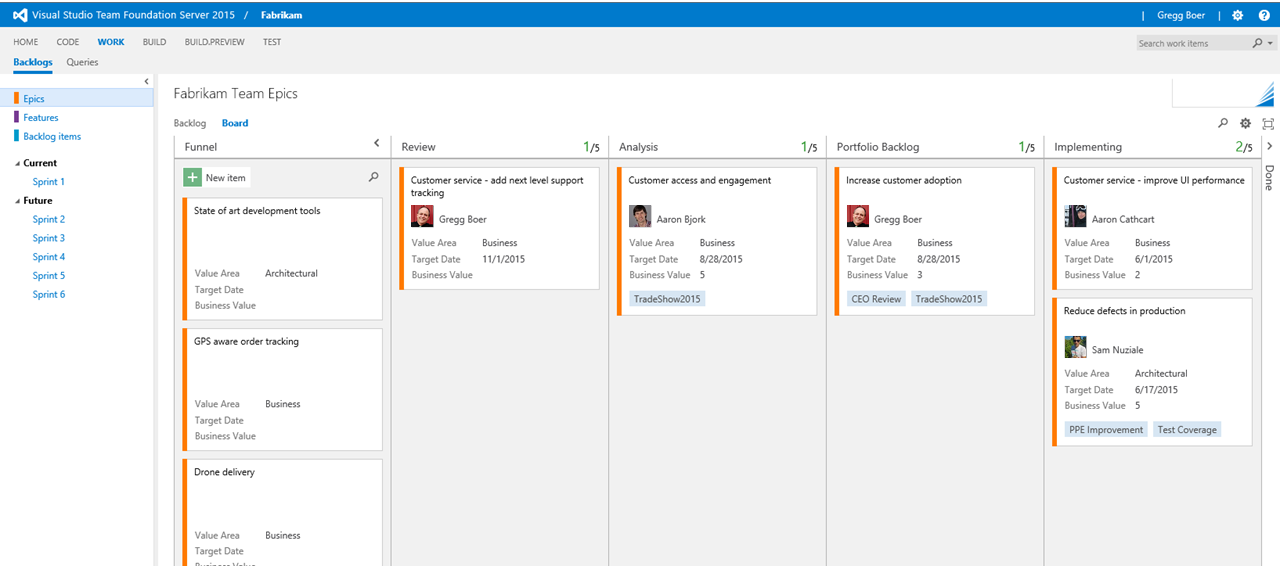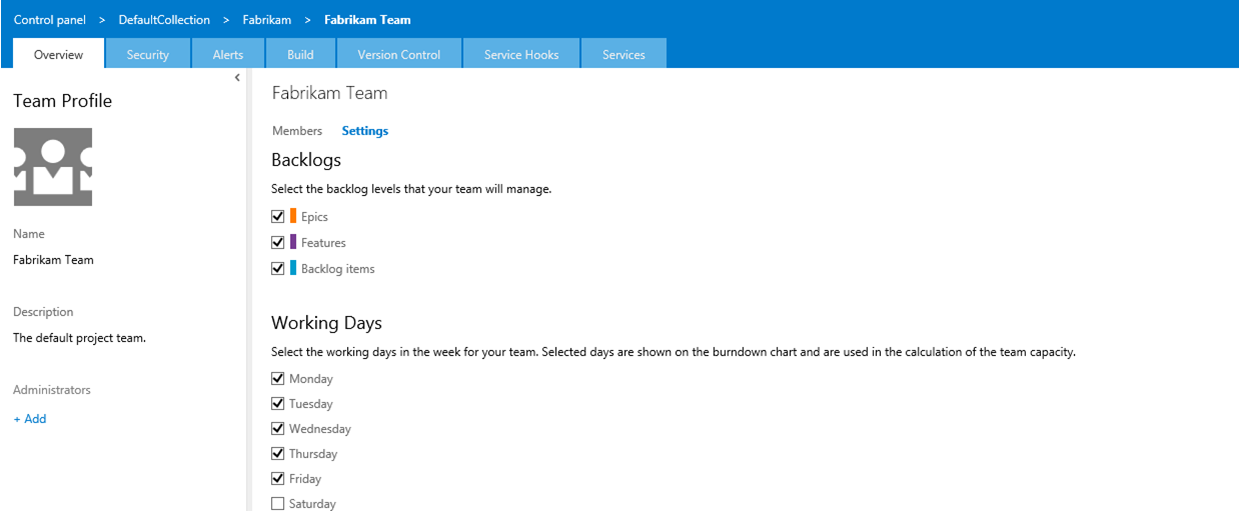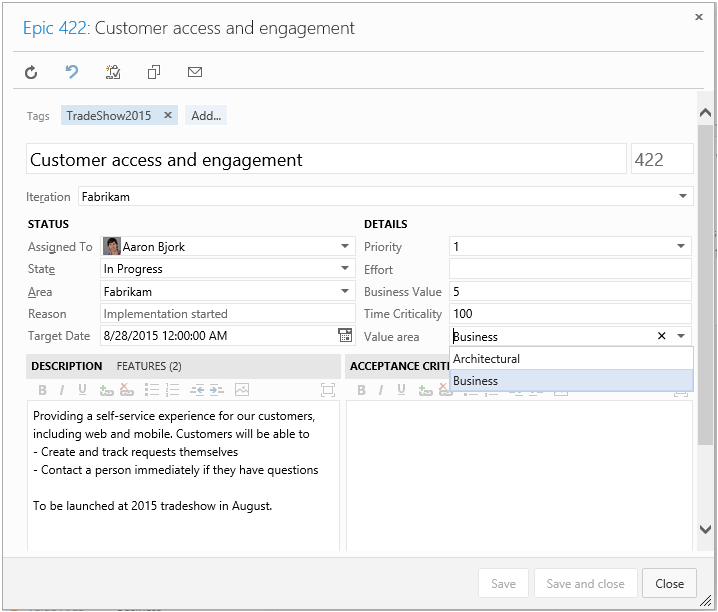We are very excited to provide built-in support for the Scale Agile Framework using our existing Scrum, Agile, and CMMI templates.
Some time ago, we published a whitepaper: Scaled Agile Framework: Using TFS to support epics, release trains, and multiple backlogs, which detailed how to use TFS to support SAFe practices.
In support of that guidance, we also published on the Microsoft Download Center, a set of Process Template Samples with Support for SAFe.
With the May 15 deployment of Visual Studio Online, the Agile, Scrum, and CMMI process templates are now updated to include these changes. All existing and new projects will have the following SAFe concepts built right in:
Support for Epics
We have added an Epic work item type and a backlog/board to track Epics.

Epics are hierarchically above Features. Features are mapped to Epics, like Backlog items are mapped to Features.
Full backlog and board functionality are available. You can manage the Epic backlog like any other backlog as well as customize your Kanban columns and cards to match your needs.
It is important to know that the Epics backlog is not enabled by default. To enable this feature, you’ll need to visit the Team Settings page and check the “Epics” checkbox.

The Epics backlog can be turned on or off at the team level. As per our whitepaper, Portfolio Teams should enable the Epics backlog. Program and Feature teams can disable the Epics backlog if they don’t manage Epics in your organization.
Support for Architectural vs. Business backlogs
We have added a “Value Area” field to all work items that appears on a backlog, that is: Epics, Features, and on (depending on your process template): Product Backlog Items, User Stories, or Requirements.
The Value area has two values: Business and Architectural. By default value, all Epics, Features, and Stories are Business types. To create an Architectural Epic, Feature, or Story, set the value to Architectural.
Note in the Epic Kanban board example above, we’ve added “Value Area” as a field that appears on the card. This allows you to quickly see which Epics are supporting your Architectural Roadmap. You can, of course, also do this with your Features and Stories board. The field is always available from the work item form.

With this functionality you can define Architectural Epics, which breakdown into Architectural Features and Stories, allowing you to track your architectural roadmap across your organization.
TFS 2015 RTM On-premise release
For the TFS 2015 RTM on-premises release, the shipped process templates will include these changes. Existing team projects will not be modified. Existing TFS 2013 customers can enable this functionality today, by following the guidance in the whitepaper: Scaled Agile Framework: Using TFS to support epics, release trains, and multiple backlogs.
To all the SAFe Agilistas out there, enjoy these changes! If you aren’t interested in SAFe, don’t worry. We made the additional functionally opt-in.

0 comments